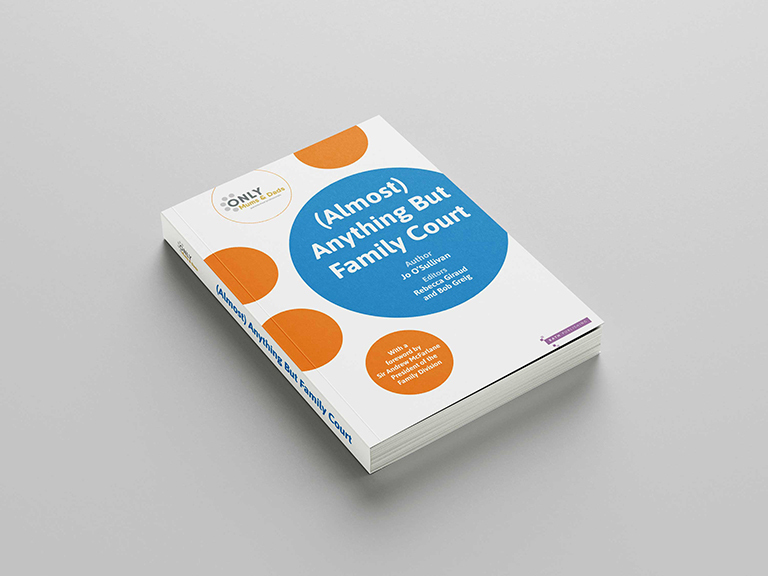Words can wound or words can heal. In the context of a relationship breakdown it is often the case that the expression of unresolved hurt arising from the breakdown is reflected verbally; in letters either direct or with the added volume of solicitors letters, e-mails and text messages.
Any attack, whether verbal or in writing naturally evokes a flight or fight response the first resulting in either disengagement and capitulation to the person who is seen as the more powerful or the second, a response which may be of equal or even greater hostility, leading to an escalation of conflict.
Either way it results in one or both feeling angry, trying to re-exert the control over their lives they feel they are at risk of losing. Response leads to further response, the whole basis of litigation encourages a point-scoring, blame-attributing approach to justify one’s own actions and undermining that of the other person. Yet judges almost always express dismay at the inability of parents to understand that their conflict is harming their children, apparently oblivious to the fact that the very system of which they are a part encourages this adversarial approach.
So how on earth can this vicious cycle be broken, how can conversations whether direct or though legal channels be transformed into a problem-solving approach?
I may not have all of the answers but have found the following effective in many situations
- When receiving an aggressive or angry communication in any form, first listen to your natural internal response. It is likely to be one of protest, anger, a desire to respond and justify your own stance. It is the equivalent of being slapped across the face. Put into words how it makes you feel and I find it helpful to highlight or underline the provocative words which evoke your strongest response. They may be overtly rude or manipulative.
- Put into words how you would have instinctively wanted to respond, in other words give vent To your feelings in a private note, which will not be sent. It is good to get the instant feelings out and acknowledged. Until that first step is done, it will prevent any further progress.
- Having paused and had a cup of tea, then review the communication again from a different perspective. This time you will be searching to ascertain whether the other person is being purely controlling or manipulative or whether despite the words used part of what they say is indicative of a valid point of view, worry or grievance which is being expressed poorly, in a childish way.
- This is the time to separate the wheat from the chaff. Your challenge is to determine which parts of the communication you wish to respond to and which you do not. You do not have to answer everything.
- So, some parts of the communication will be gratuitously rude or hurtful. They are designed to get you hooked into an argument on their terms which they enjoy, their territory. The more insecure someone is the more they will seek to control their world, by pulling the strings or pushing the buttons they have learned are likely to get a response. Don’t responded these parts of the communication, you can choose not to.
- Other parts may be motivated by something different. They may be simply angry about something, perhaps the other person is fearful and is trying to exert control themselves in a situation in which they are fearful of loss and trying inappropriately to secure their position by threats.
- You now have a choice as to how to respond to the different elements.
- In relation to the provocative hurtful gratuitous comments, the basic law you need to understand is you get what you reward. If you respond to those words, then you are likely to achieve nothing but to add fuel to the fire. Even a put-down of the other person by shaming them, remonstrating with them for their use of language will be seen as a response which will justify a further response from them – and so it goes on. Therefore the right response is to ignore such comments. Should you wish, you should record them to demonstrate later to a judge or other person what language has been used on you to demonstrate their coercive approach. This provides you with the best possible evidence of the approach adopted by the other person, as it comes from their own hand. If you read such words in that way, their power to hurt can be transformed into the satisfaction that they themselves have provided the best possible evidence should you need it later. Keep it.
- If there are concerns which are genuine to them but badly expressed, which if expressed differently would have evoked an adult response from you addressing any concerns then do the following:-
- Re-write their communication in the way they should have expressed it. It would have started politely with “dear …” using your first name; it should been worded to express the following:
- What they are worried about.
- What they are asking you to do about it.
- Asking for a response within a reasonable timescale.
- Now draft your response to your reworked communication. You will also start with “Dear….” you will end with “Regards” because you will be writing to them to model what good communication looks like politely as parent to parent.You will acknowledge their worry and not dismiss it, you will put it into the words they should have used. You’ll then go on to respond in the way you can to address any concerns. If there is a matter on which you are not going to agree, you should take this opportunity of explaining why in non-emotive language, showing that your approach is one which meets the needs of all concerned children and adults alike. If you can provide some alternative choices and explain the pros and cons and why you recommend your preferred suggestion then that will provide them with the opportunity of responding in kind.Your communication should model a good boundary-setting structure as follows, by setting out clearly factually what happened: what its effect on you and/or the children was (factual): what now needs to happen; when it needs to happen by (setting a reasonable deadline and agreeing to any justified request for an extension); the consequence of it not happening by that deadline. The consequence will not be worded as a threat, it will be an expression that you are left with no alternative, in the absence of a positive response, to any other course of action to resolve the situation.
- As this will be a new form of communication between you it may well take some time to take effect and bring about a change in response; the exercise may have to be repeated many times; but sooner or later the difference between your communication and theirs should dawn on them as showing them to be unreasonable and they will come to realise that anyone seeing such communications (such as a judge) will quickly come to the conclusion which parent is reasonable. That accountability will in most cases the conversation. Your role is to set a good example of what communication between parents should look like and not respond to provocation.
- Your children need you to be the one to take responsibility for being the adult; hopefully using the above method you will have educated the other parent to follow your lead for the benefit of the children.
Posted on July 5, 2018
















